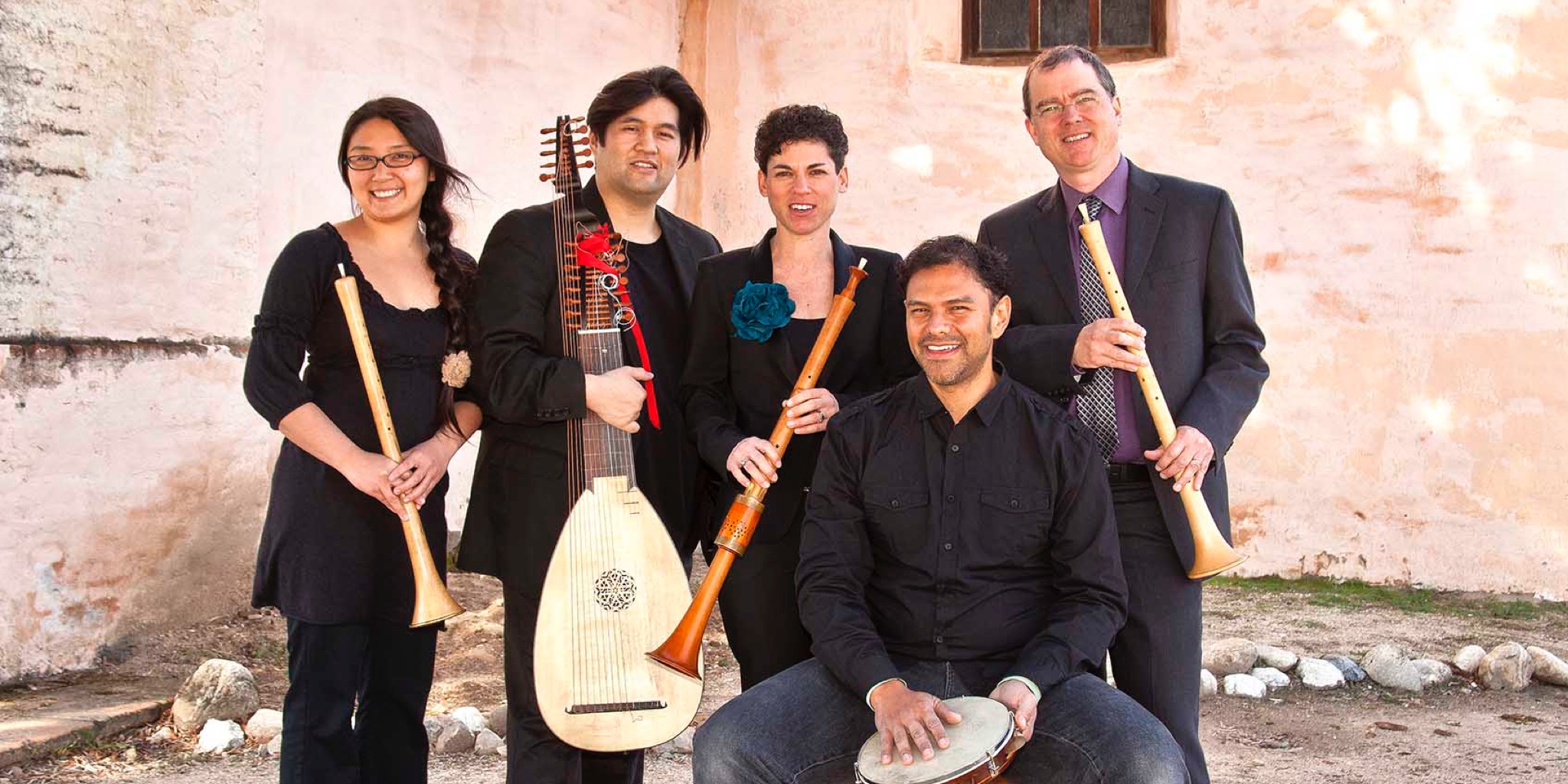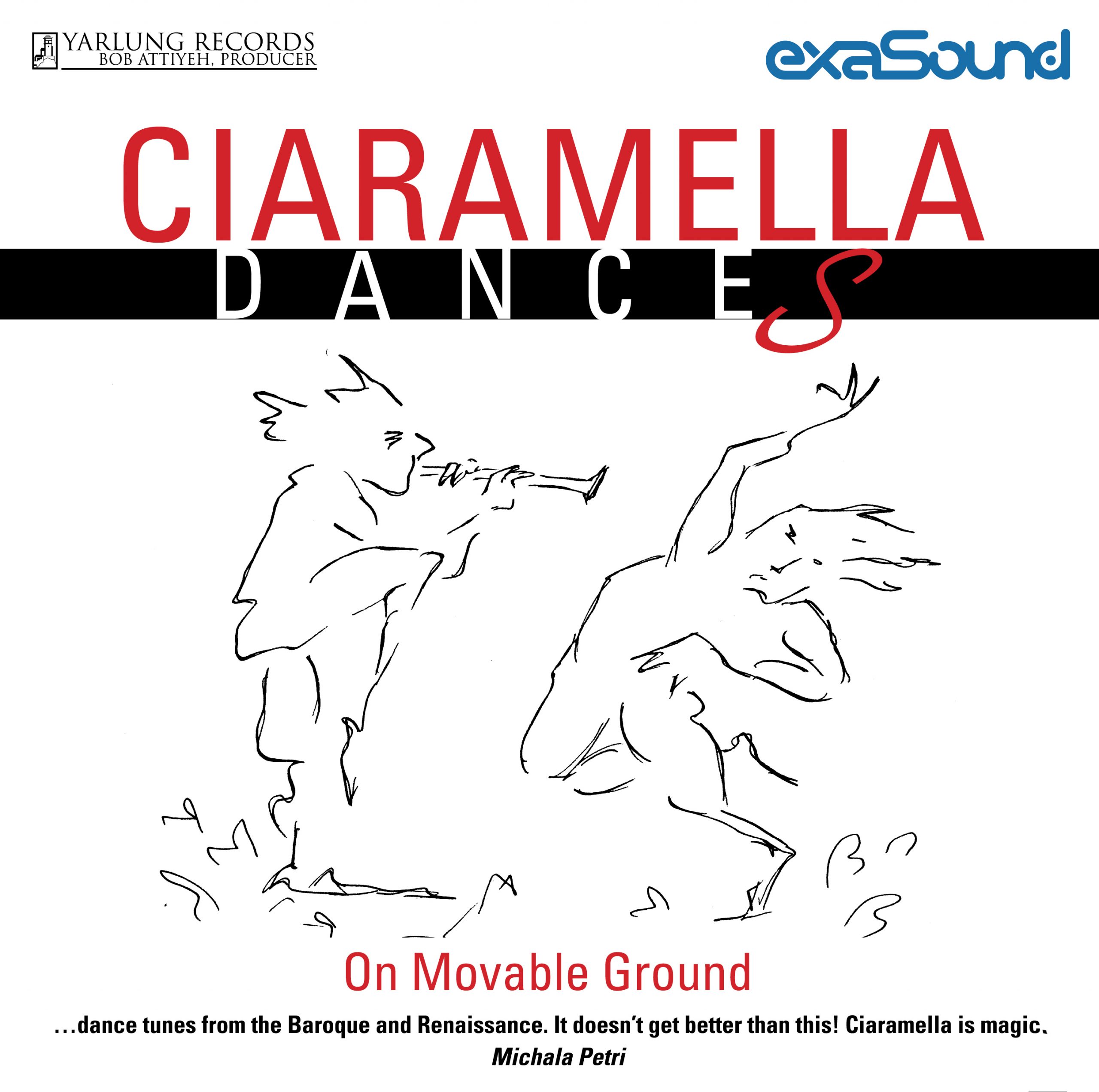Yarlung Records’ producer Bob Attiyeh warms you up for their new DSD Release “Ciaramella – Dances On Movable Ground“
-
Ciaramella Dances€17,99 – €26,99
Dear friends,
George Klissarov generously sponsored Yarlung’s first DSD releases. His Canadian company, exaSound, makes superb DACs that many of us in the NativeDSD community know and love. They vary from compact units that connect via usb cables to full-on music servers. I use two of these DACs myself. George and I talked about Ciaramella Ensemble several years ago, and he wanted very much that these recordings come out in DSD following the album’s success on vinyl and on compact disc. I promised this would happen, and thankfully, George didn’t pressure me for a release date.
Ciaramella Ensemble recorded this album with me in Alfred Newman Hall on the campus of the University of Southern California in June, 2011. Every track is a single take. No editing. This is one of Yarlung’s classic “super simple” recordings. We used one AKG C24 stereo microphone, microphone amplification by Elliot Midwood, and analog tape vacuum tube recording circuitry designed for me by Len Horowitz. To make these DSD files for you, we played the tapes on the SonoruS ATR10 into my trusty Hapi from Merging Technologies, recording at 256fs.
Ciaramella’s original members met as graduate students at Case Western Reserve University in Cleveland, Ohio. They first performed together on Christmas Day in 2003 and have since performed in concert halls and in music festivals on three continents. Adam and Rotem Gilbert co-direct the ensemble, and both teach Renaissance and Baroque music at the Thornton School at the University of Southern California.
Officially based in Los Angeles for a few years now, Ciaramella has taken on everything local, from earthquakes to myriad early music performances in Southern California. This is dance music, so jazz fans and lovers of the Polka or Rock and Roll should not be surprised if they wind up tapping their feet. Our species has been dancing for more centuries than we have been using speech. For those of you more specifically interested in early music, here are some of the juicier details for you:
Instruments
The instruments Ciaramella uses are copied from original instruments still extant, or recreated from paintings and treatises. In some instances these new instruments come from research into the shapes and sizes of still existing instrument cases for instruments long missing. Ciaramella used 1/4-comma meantone and tuned to A=465 and A=415.
To the modern concertgoer, shawms remain among the least familiar of early instruments. Ciaramella,” the Italian word for “shawm,” originated in the Greek and Latin words for “reed” (“kalamos” and calamus” respectively). Today’s oboe is a modern version of the shawm. Like the oboe, the shawm is a double reed instrument (higher and louder than the modern oboe) with finger holes instead of keys, and a flared bell.
The modern trombone, or “big trumpet” in Italian, originates in two fifteenth-century instruments, the slide trumpet and the sackbut. In the case of the slide trumpet, the whole instrument moves up and down along the mouthpiece tube, thus altering the pitch. The sackbut has a fixed mouthpiece tube, and adjusts its pitch like the modern trombone, with a slide that changes the length of two tubes joined by the slide on the far side of the instrument from the mouthpiece. In fact, the sackbut is an instrument designed more like its modern descendent than many others. Indeed, a modern trombonist can play a sackbut with only moderate adjustments for embouchure and breath support.
The Renaissance recorder has a wider bore than its Baroque counterpart (which has remained virtually unchanged since Bach’s day). With its tuning and more limited range, it would not function well in the Brandenburg Concertos, but its bore contributes to the distinctive sound of its fatter low register and the complex overtones throughout its range. When listening to takes of this album with Michala Petri, she exclaimed “Wow! That is such a really wonderful tone. And Bob, do you know how hard it is to play these earlier instruments in tune? Adam and Rotem do a great job.” Incidentally, you can hear Michala on multiple recordings released by NativeDSD.
Ciaramella’s Flemish bagpipes differ from modern Scottish Highland bagpipes. The chanter, the pipe with the fingering, closely resembles the chanter from Scotland, and both instruments use the same type of reed. But the Flemish bagpipe has only one drone, as you will hear in Sardanas, or in the duet between Adam Gilbert on bagpipe and Arthur Omura playing the hurdy gurdy in our medley of La Mantovana, Bobbing Joe and Auprès de ma blonde on track 19.
Paul Beekhuizen made Ciaramella’s Flemish bagpipe in G based on Pieter Bruegel’s engraving The Fat Kitchen. Joel Robinson built the bagpipe in A after Pieter Bruegel’s painting The Peasant Dance. The hurdy gurdy is an original nineteenth-century instrument made in the Baroque style, from the collection of Curtis Berak.
Hope you enjoy!
Ciaramella Ensemble
Adam Knight Gilbert and Rotem Gilbert, directors
Adam Knight Gilbert, shawm, recorder, bagpipe
Rotem Gilbert, shawm, recorder
Doug Milliken, shawm, recorder, bagpipe, dulcian
Aki Nishiguchi, shawm, recorder
Greg lngles, sackbut
Erik Schmalz, sackbut
Malachai Komanoff Bandy, viola da gamba
Jason Yoshida, guitar, theorbo
Arthur Omura, harpsichord, hurdy gurdy
Jose Gurria-Cardenas, percussion
Instruments used in this recording
Treble shawm by Paul Hailperin (2005)
Treble shawm by Bernard Schermer (2000)
Alto shawms by Bob Cronin (2003)
Sackbuts by Rainer Egger (2001, 2002)
Dulcian by Martin Praetorius (2005)
Bagpipe in A by Joel Robinson (2003)
Bagpipe in G by Paul Beekhuizen (1997)
Recorder consort by Bob Marvin (1996, 1999)
Baroque guitar after Antonio Stradivarius by Jack Sanders (2005)
Theorbo by Robert Meadows (1986)
Viola da gamba by Werner Trojer (2010)
Harpsichord by David Way (1986)
Percussion instruments: Brazilian pandeiro, Peruvian cajon, tenor frame drum,caxixis, and guiro Hurdy gurdy
Tuning: A=465; A=415 Temperament: 1/4-comma meantone
-
Ciaramella Dances€17,99 – €26,99








